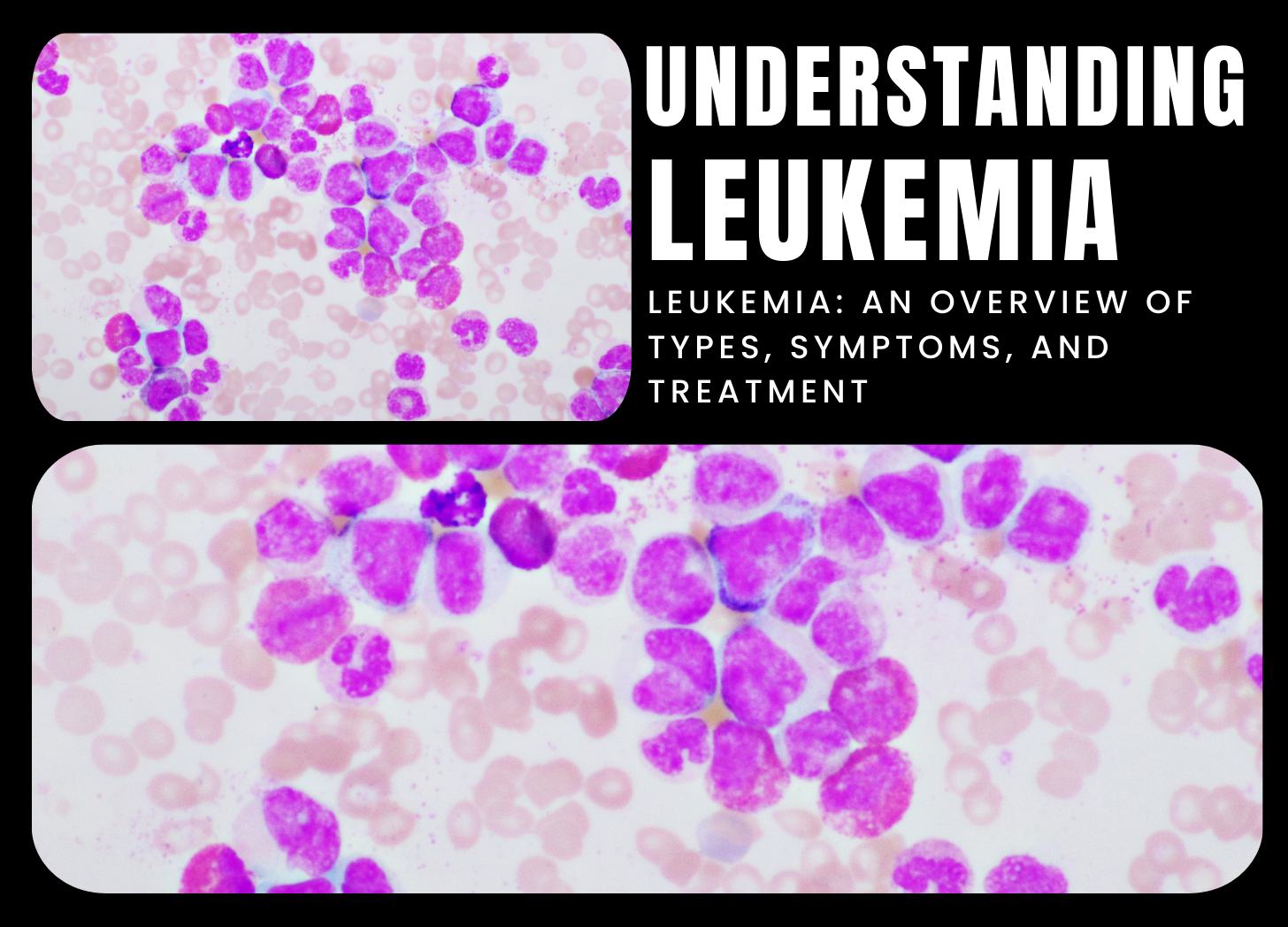Contact Us
Contact Us

Leukemia is a cancer that affects the blood and bone marrow, resulting in the abnormal production of white blood cells. These abnormal white blood cells, known as leukemia cells, fail to function properly and crowd out healthy blood cells, reducing the body’s capacity to fight infections and regulate bleeding. Leukemia is categorized into four types based on the white blood cell involved: acute lymphoblastic leukemia (ALL), acute myeloid leukemia (AML), chronic lymphocytic leukemia (CLL), and chronic myeloid leukemia (CML). Each type has unique characteristics in terms of onset, progression, and therapy.
Acute lymphoblastic leukemia (ALL) and acute myeloid leukemia (AML) are marked by the rapid proliferation of immature white blood cells, which inhibits normal blood cell production. These types of leukemia usually advance quickly and require immediate treatment to avoid complications. Acute leukemia symptoms can include fatigue, weakness, fever, recurrent infections, easy bruising or bleeding, swollen lymph nodes, and bone pain.
Chronic lymphocytic leukemia (CLL) and chronic myeloid leukemia (CML) are characterized by the slow accumulation of mature but abnormal white blood cells. These types may not present symptoms initially and progress more slowly than acute leukemia. Chronic leukemia symptoms can include swollen lymph nodes, fatigue, weight loss, fever, night sweats, and abdominal discomfort. Chronic leukemia might be discovered incidentally during routine blood tests or medical checkups.
Leukemia is often diagnosed using a combination of medical history, physical examination, and laboratory tests such as complete blood count (CBC), blood smear, bone marrow biopsy, and genetic testing to confirm the presence of abnormal cells and determine the type and subtype of leukemia. Imaging studies, such as X-rays, CT scans, or MRI scans, may also be used to assess the spread of the disease and identify complications.
Leukemia treatment depends on the type, subtype, and stage of the disease, as well as individual factors such as age, general health, and preferences. Common treatment options include chemotherapy, targeted therapy, immunotherapy, radiation therapy, and stem cell transplantation. In some cases, watchful waiting or supportive care may be appropriate for chronic leukemia with low-risk features or for elderly individuals with other health conditions.
Clinical trials are ongoing to explore new treatment approaches and improve outcomes for leukemia patients. These may include novel targeted therapies that attack leukemia cells while sparing healthy cells, immunotherapies that harness the body’s immune system to fight cancer, and precision medicine approaches based on individual genetic profiles.
In conclusion, leukemia is a cancer that affects the blood and bone marrow, causing abnormal white blood cell production. While leukemia can be a challenging diagnosis, advances in treatment have led to improved outcomes and quality of life for many patients. By raising awareness, promoting early detection, and expanding research efforts, we can make progress in the fight against leukemia and other blood cancers.
References:
Post a Comment